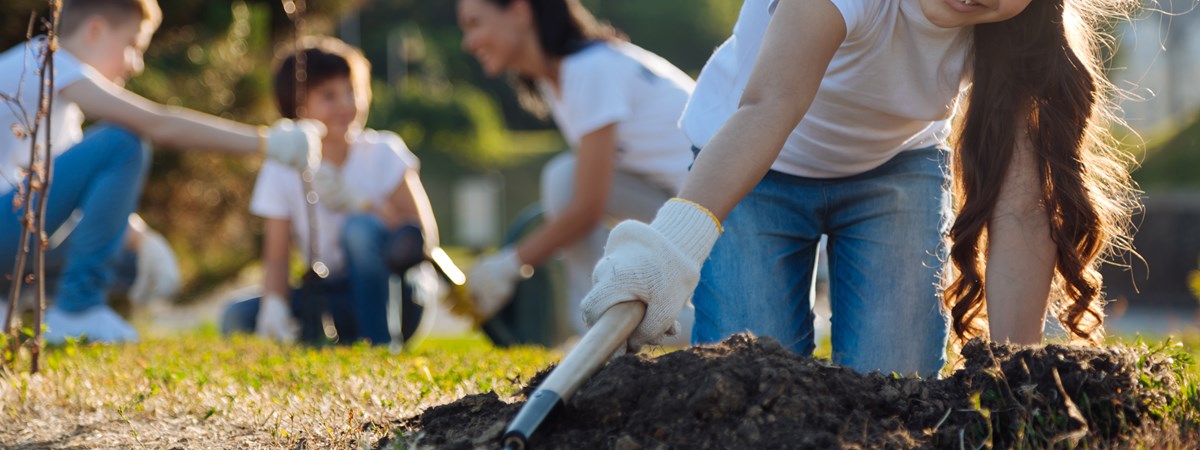Peter Milne explains the local and global environmental, social and economic advantages of implementing Sustainability Education into the classroom and the wider school community
Education for Sustainable Development (ESD) promotes the development of the knowledge, skills, understanding, values and actions required to create a sustainable world. This ensures environmental protection and conservation, promotes social equity and encourages economic sustainability.
The reasons for teachers to build ESD into their classroom activities are numerous. Environmental/Sustainability concepts offer an exciting context for the application of scientific principles, math and language skills, and social studies concepts. It promotes critical thinking, problem solving and action, all of which develop confidence in addressing the challenges to sustainable development. Above all, ESD is critical in understanding the consequences of what humans are doing to the planet and the rights and responsibilities that we all share.
Every community has environmental and social concerns, as well as community resources to aid in exploring those concerns. The beginning of the 2020’s has been a real wake-up call, as a powerful combination of science, social science, and citizen activism has pushed climate and environmental change – or emergency – to the top of public, media, policy and political agenda.

Inspired by youth actions across the globe, including Greta Thunberg and others who are voicing their concerns about the future of the planet, many of these activists aren’t just demanding climate action; they’re fighting for justice. Climate change is inherently an issue of inequality. The world’s richest 10% produce half of all greenhouse gas emissions, while the poorest feel the impacts most acutely.
However, as a result of the Coronavirus Pandemic, the world has been shaken up, turned upside down and has presented us with challenges we probably never expected to face. Sustainability, in many ways, has been side-lined, although we have seen a hopeful window into the future through less air pollution, cleaner water and biodiversity recovery. I believe that, faced with imminent danger, the human spirit and community step up in a way that has been so inspiring to see. These changes could be locally by delivering shopping to those isolated and vulnerable, to schools showing incredible resolve and initiative to support remote learning. However, it also includes governments supporting businesses financially, to amazing ideas, support and empathy from so many across all social media platforms. A similar opportunity now awaits, to take on the climate crisis and similar major threats to this planet.
How children grow and develop emotionally depends on how well they are connected to the real world, helping to nurture empathy and understanding of the world around them so they have a greater purpose and involvement in their education and their future. Community spirit across the world has been so evident to see. We need to take that forward and, using the SDGs as a guide, build these social skills more into our teaching and learning environments. An education like this will play an increasingly critical role in raising that consciousness and creating sustainable solutions for the future of our planet.

From the experiences I have had working with schools from around the world, I have noticed a greater interest and concern in taking on sustainability issues, whether within the school itself, the local community or supporting international projects.
However, the challenges remain the same.
- Time pressures on an increasingly busy and demanding school year
- Whole school engagement
- Curriculum integration within systems that can be quite rigid and overloaded
- Staff development and support
The starting point, therefore, has to be a fundamental assessment of the central role that sustainability needs to play in education. The Why and the How. It is also about making it personal. Thinking of loved ones, whether family or friends, and imagining how the world could be in their lifetime and the lifetimes of future generations. How are basic rights, including the rights to health, nutrition, shelter, safe water and access to necessary resources and social structures that take care of and support all elements of the ecosystem, being impacted already? How could things worsen in the future as a result of the climate crisis? How are we damaging vital ecosystems across the globe that we depend on and that support so many species now under serious threat of extinction?
Making it personal helps to motivate not only a desire to learn and understand more, but the motivation and desire to do something about it. However, there has to be a clear focus on, support for and commitment to education around climate change and sustainability throughout a whole school community, not as an add on but as a core purpose. This purpose must embrace the connectivity of all 17 UN’s Sustainable Development Goals as a way to develop caring and informed global citizens who can make a real positive difference to the future.
Empowering teachers and students, through opportunities to learn and share ideas, will have a knock on effect and help develop a more effective framework for pushing sustainability to the fore.
We HAVE to put sustainability at the very heart of learning.

